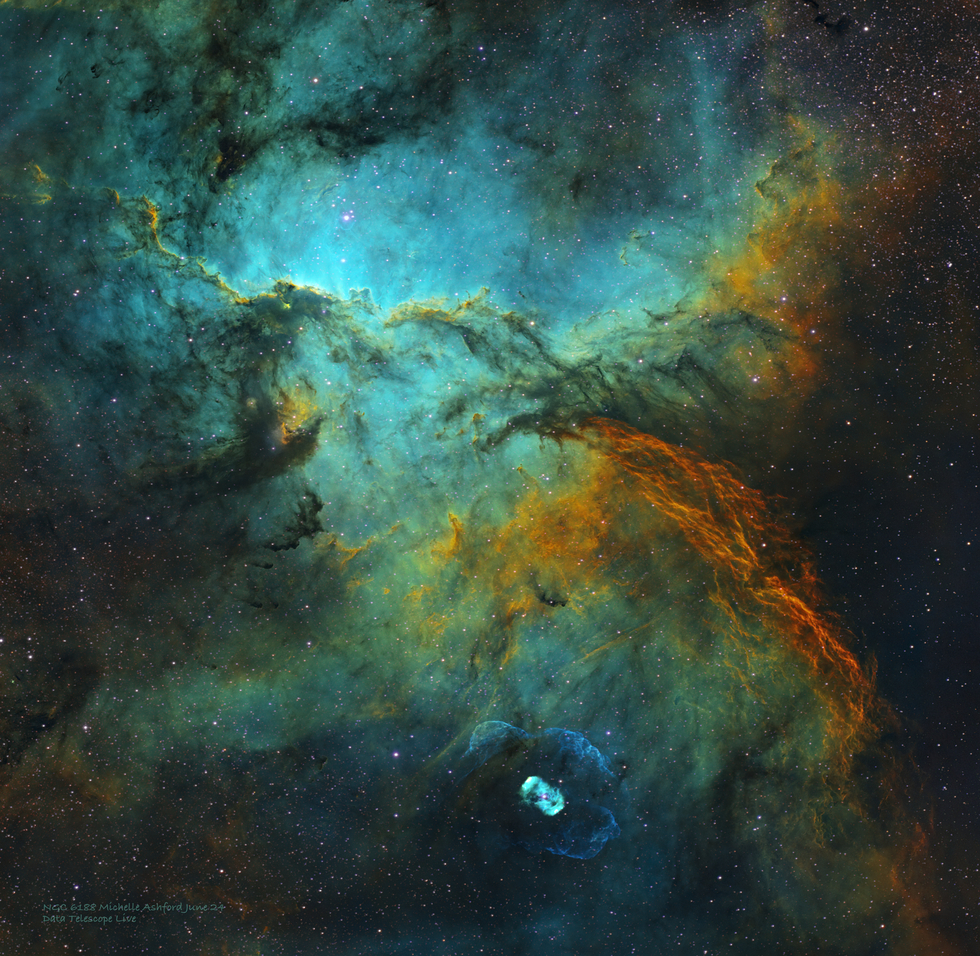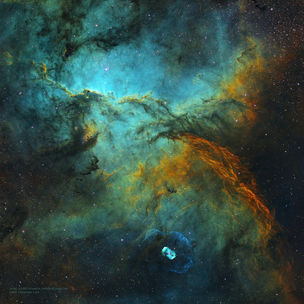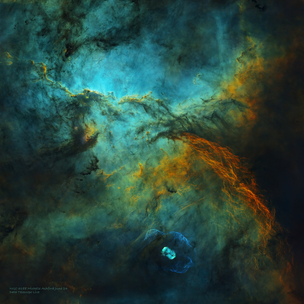NGC 6188, the Fighting Dragons of Ara
0
15
NGC 6188, the Fighting Dragons of Ara
The NGC 6188 emission nebula is found near the edge of an otherwise dark large molecular cloud in the southern constellation Ara, about 4,000 light-years away from us. This region is also known as the Rim Nebula and the Fighting Dragons of Ara.
Born in that region only a few million years ago, the massive young stars sculpt the fantastic shapes and power the nebular glow with stellar winds and intense ultraviolet radiation. The recent star formation itself was likely triggered by winds and supernova explosions, from previous generations of massive stars, that swept up and compressed the molecular gas.
The nebula is illuminated by the bright cluster, NGC 6193, above the dragons in this image.The young, massive O-type stars in NGC 6193 both ionise and illuminate the eastern edge of NGC 6188. It is thought that the recent star formation likely originated by strong stellar winds and supernova explosions from previous generations of massive stars.
The bifurcated emission nebula, NGC 6164-6165 (also referred to as the Dragon’d Egg) is located below NGC 6188. Originally thought to be a planetary nebula, the core appears to have two nearly symmetrical lobes projecting out from the central star, HD 148937, which is a young O-type star 40 times more massive than our sun. In addition to the nearly symmetrical lobes, but further out, there is a bluish ionised oxygen (OIII) cloud representing an early expulsive event.
The second image is a starless version which better highlights the Fighting Dragons.
Born in that region only a few million years ago, the massive young stars sculpt the fantastic shapes and power the nebular glow with stellar winds and intense ultraviolet radiation. The recent star formation itself was likely triggered by winds and supernova explosions, from previous generations of massive stars, that swept up and compressed the molecular gas.
The nebula is illuminated by the bright cluster, NGC 6193, above the dragons in this image.The young, massive O-type stars in NGC 6193 both ionise and illuminate the eastern edge of NGC 6188. It is thought that the recent star formation likely originated by strong stellar winds and supernova explosions from previous generations of massive stars.
The bifurcated emission nebula, NGC 6164-6165 (also referred to as the Dragon’d Egg) is located below NGC 6188. Originally thought to be a planetary nebula, the core appears to have two nearly symmetrical lobes projecting out from the central star, HD 148937, which is a young O-type star 40 times more massive than our sun. In addition to the nearly symmetrical lobes, but further out, there is a bluish ionised oxygen (OIII) cloud representing an early expulsive event.
The second image is a starless version which better highlights the Fighting Dragons.
SPECIFICATIONS
Telescope
Aus-2 Takahashi FSQ-106ED
Camera
QHY 600M
Location
Australia
Date of observation
27 Oct 23 10 Datasets
Filters
SHO
Processing
Pixinsight, Blur Exterminator, Affinity, Star Exterminator, Topaz De-Noise/Sharpen




